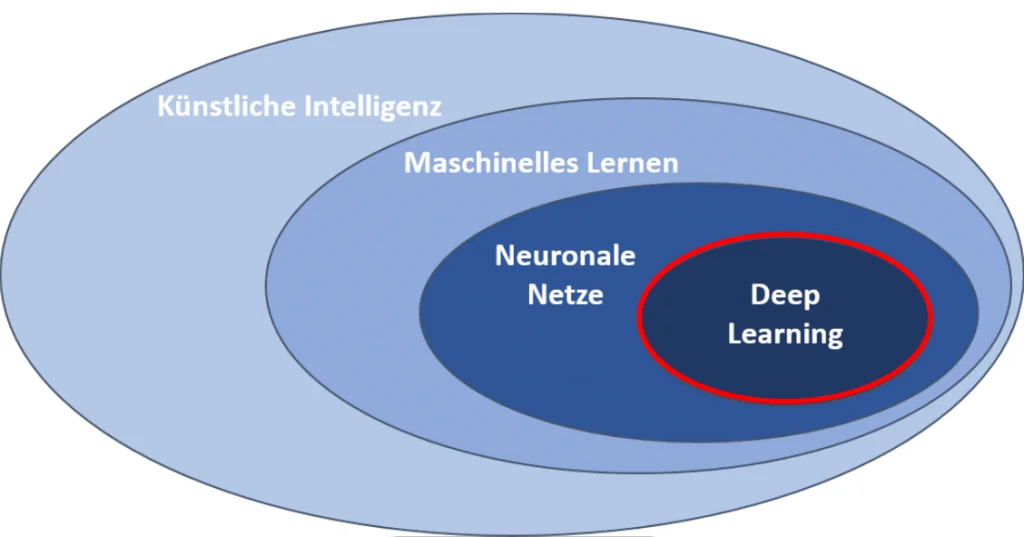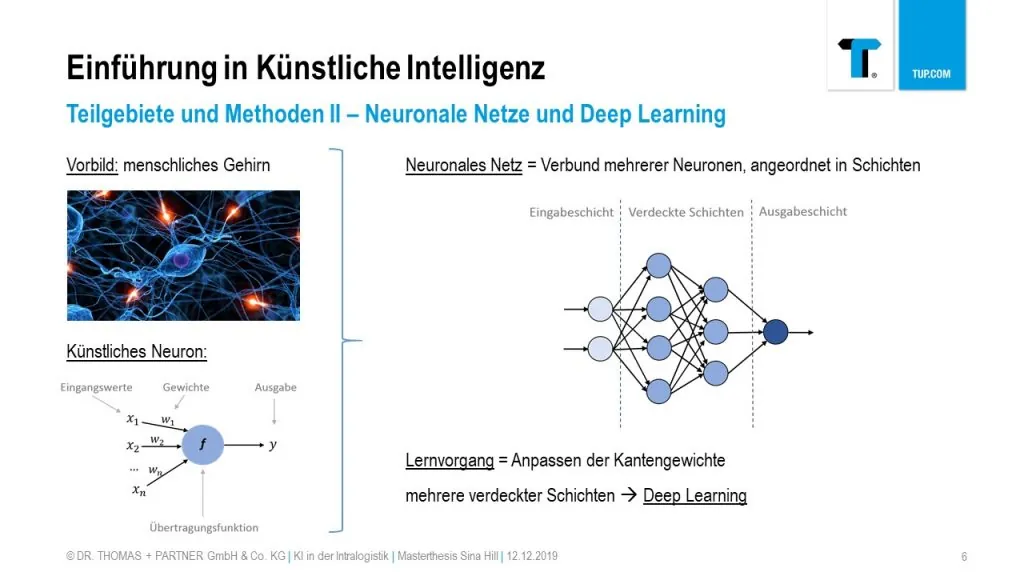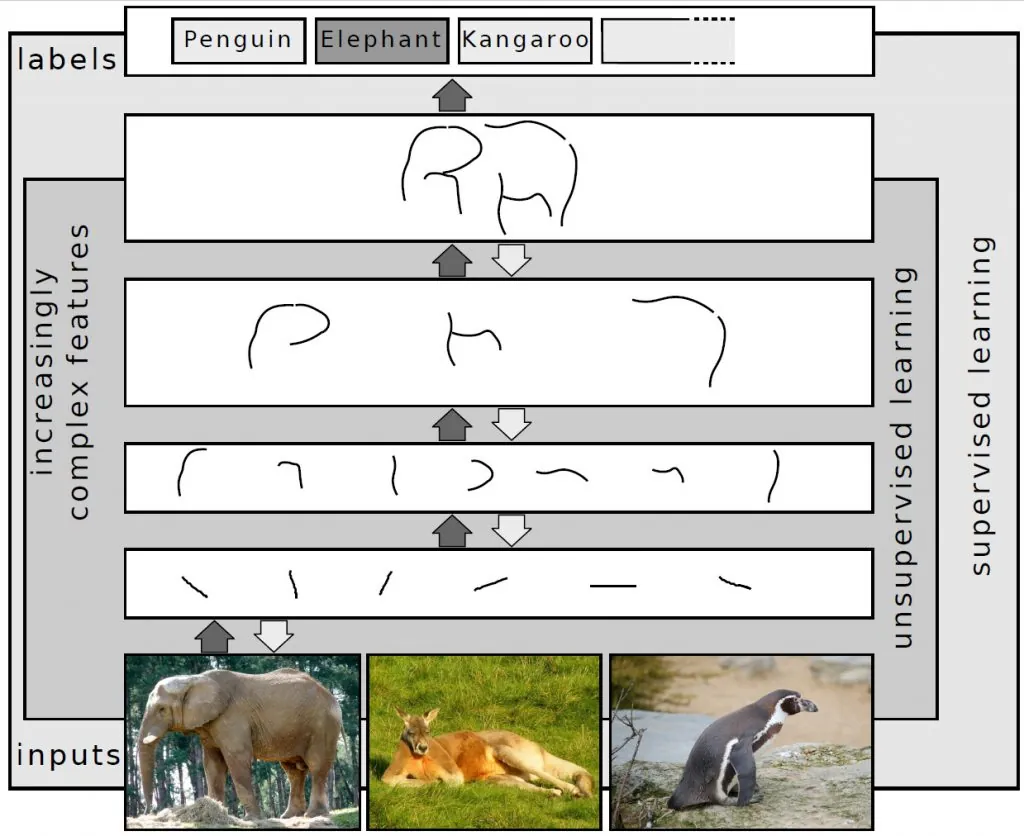Artificial Intelligence (AI) has become an integral part of our lives. No matter whether it is translation or image recognition, healing methods for diseases or the development of new materials – in many areas AI is used to support people in their work. The term Deep Learning (DL) often appears in this context. This part of the TUP series on AI deals more closely with the topic of Deep Learning in order to give a preliminary overview.
Deep Learning is, contrary to what might be assumed at first sight, not an abstract or futuristic construct. DL represents a subset of Machine Learning (ML), which we have examined in more detail in this article. ML, in turn, is considered a subset of AI.

In short, DL is a learning method that teaches algorithms to solve tasks autonomously. They learn by using test data, which is equivalent to a kind of intelligence, i.e. a weak AI. Ergo: DL is used to create AI.
Deep learning and artificial neural networks
The term DL is inseparably connected with the term artificial neural networks (ANN), because they are the basis of this learning method. ANN are modeled on the neural networks in the human brain. The artificial neurons are arranged in successive layers and are interconnected. In the simplest models, there is an input layer, an output layer and a so-called hidden layer in between. Similar to the human brain, the signal strength determines whether a signal is transmitted from one layer to the other. In the end, this influences the respective result. ANN are structured in such a way that the individual signals can be weighted and summed.
But behind ANN there is no uncoordinated scientific procedure. The basic concept is based on statistical calculation methods, such as the logistic regression, which is explained in this video.
Among other things, regularities are to be found in the data to be processed with the help of probability statements. An ANN disentangles very complex correlations into abstract information and brings them together again later for an interpretation. The knowledge gained can then be related to other data and linked in a wider context. In simplified terms, this can also be described as an automated, statistical evaluation of data.
Challenges in deep learning
DL is mentioned as soon as there is more than one Hidden Layer in an ANN. The more artificial neurons and layers there are, the more complex facts can be mapped. However, an ANN needs a large amount of training data before complex problems, such as image recognition, can be solved. Only then it can detect regularities in the data with great certainty. The larger the database, the better the ANN learns. Once it has learned, DL allows the system to react dynamically to changes without human intervention.

The processing of these large amounts of data has set limits to the DL in the past decades. Since a lot of computing power is needed to ensure the fast processing of a large amount of data, DL only experienced its breakthrough in the last years. The theories behind it even go back to the early 1940s.

Deep Learning in intralogistics
Since Deep Learning is the basis for Machine Learning, it is used today in almost all systems that work with AI. Image and speech recognition, control of complex systems, early warning systems, time lapse analysis, control of autonomous vehicles – all these are use cases where DL is used to support humans.
Conclusion
Already today DL is an integral part of our everyday life. It can be assumed that the services provided by DL will increase even more due to further increasing computing power. The progressive digitization of all areas of our lives also contributes to this, which – dropping the keyword Big and Smart Data – can in turn form the data basis for further DL applications. DL will also continue to play an important role in intralogistics. The already high degree of automation within warehouses and the (relatively) simple, recurring processes are an excellent basis for DL algorithms.
Author teaser image: Carson Mastersion